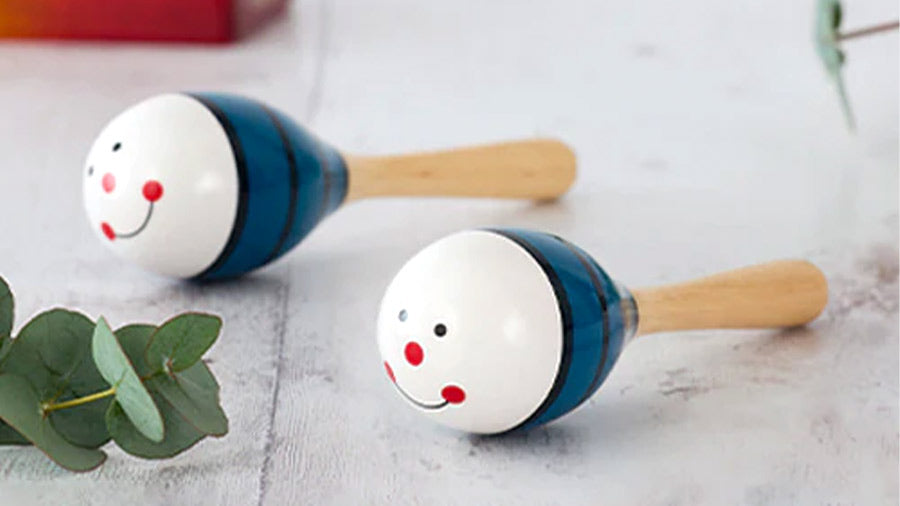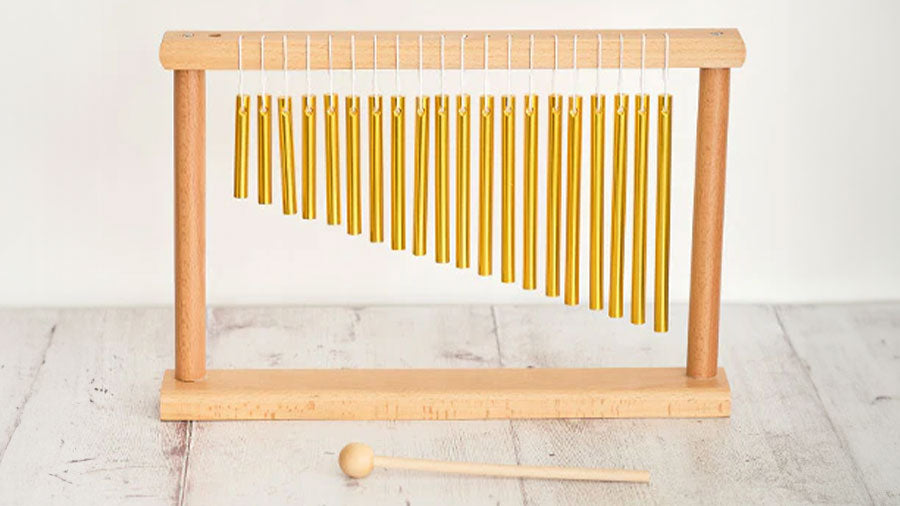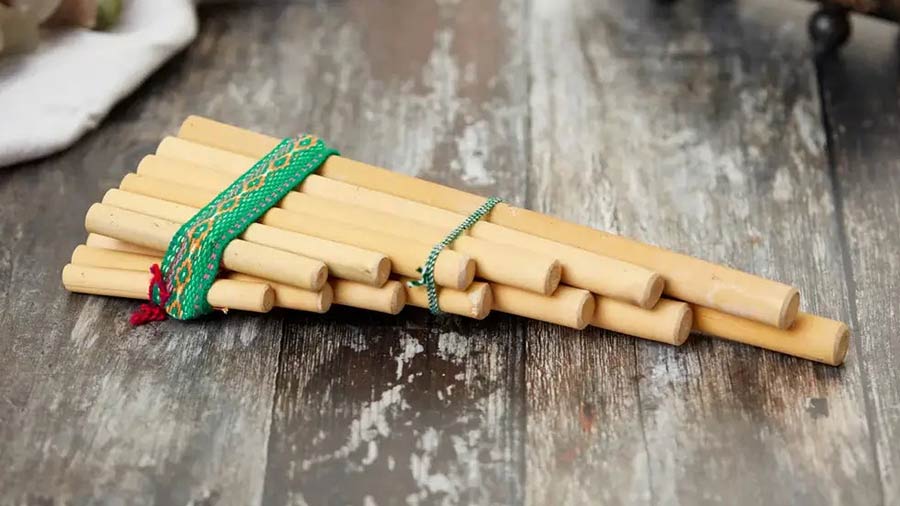Musical Instrument Difficulty Rating (Explained)
This guide provides general age and difficulty recommendations for musical instruments. However, individual abilities, preferences, and learning styles vary, so consider the instrument's size, weight, and learning curve when choosing. Musical instruments are not toys and may pose risks. Always supervise children during use. Some instruments may contain small parts, sharp edges, or be heavy and fragile. Not intended for unsupervised use by children. Handle responsibly to avoid injury. Buyers are responsible for safe use and care. This guide is not a substitute for supervision.

Difficulty 0 - Suitable for 3 years old +
Children as young as three are beginning to explore the world around them and develop their motor skills. Introducing them to simple percussion instruments like maracas and tambourines can spark curiosity and help develop hand-eye coordination and rhythm awareness. Music engages their senses and fosters early social interactions as they learn to create sounds and rhythms with others. These instruments are designed to be easy to play, but adult supervision is essential. Always ensure safe use, as some instruments may have small parts or be lightweight and fragile. The collection includes whistles, percussion instruments, and hand drums.
Discover Extremely Easy Instruments
Difficulty 1 - Suitable for 5 years old +
At five, children's cognitive skills improve, enabling them to handle slightly more complex instruments. They become eager to express themselves creatively, showing interest in melodies and songs. Music helps learn patterns, boosts memory, and offers a fun way to express themselves. Instruments in this collection include heavier percussion instruments, kazoos, tambourines, drums, basic xylophones, smaller whistles with notes and recorders. Adult supervision is essential to ensure safety, as some instruments may have small parts or pose risks if not used properly. Always supervise and ensure responsible use.
Explore Very Easy Instruments
Difficulty 2 - Suitable for 7 years old +
Seven-year-old children are more independent and curious, exploring sounds and nurturing creativity. Music fosters emotional expression and builds confidence. With practice, younger players may need a few days to a week to learn new skills. Instruments in this collection include xylophones with more than four notes, beginner recorders, flutes, ukuleles, and djembes. As some instruments may require more coordination, adult supervision is recommended to ensure proper handling.
Find Easy Instruments
Difficulty 3 - Suitable for 9 year olds
By age nine, children are deepening their understanding of music, including melody, harmony, and rhythm. Intermediate-level instruments like flutes and clarinets help refine technique and allow for greater self-expression. They may also begin participating in school bands or ensembles, fostering teamwork. As these instruments require more precise handling, adult supervision is recommended to ensure proper use.
Shop for Somewhat Easy Instruments
Difficulty 4 - Suitable for 11 year olds
As preteens, children become more focused on their interests. Instruments like guitars and keyboards offer new challenges and a way to express themselves. They may explore different genres, helping shape their identity. Given the complexity of these instruments, adult supervision is recommended to ensure proper use and safety.
See Moderately Easy Instruments
Difficulty 5 - Suitable for 13 year olds
By thirteen, teenagers deepen their appreciation for music, using instruments like electric bass or drums to experiment with styles. They may join bands, fostering self-expression. Regular practice is needed for progress. Instruments include electric bass, keyboard, piccolo, cello, conga drums, and stringed instruments. Adult supervision is recommended for safe use.
Check Moderate Instruments
Difficulty 6 - Suitable for 15 year olds
At fifteen, teenagers refine their skills and pursue their passions with determination. Instruments like violas or trumpets offer new challenges and growth opportunities. They may engage in competitions or performances, striving to excel and reach their goals. Music becomes a source of pride and accomplishment as they continue to develop. Instruments include didgeridoo, violas, and trumpets.
Play Moderately Difficult Instruments
Difficulty 7 - Suitable for 17 year olds
As teenagers approach adulthood, they are more focused and committed to their musical pursuits. Advanced-level instruments like oboes or French horns challenge them to reach new heights of skill and artistry. They may consider pursuing music at a higher level, such as studying at a music conservatory or auditioning for professional opportunities. Music becomes a lifelong passion and pursuit as they continue to strive for excellence and make meaningful contributions to the world of music. (Full size violin, cello, flute, trumpet, oboe, French horn, marimba)
Try Difficult Instruments
Difficulty 8 - Suitable for intermediate adults
For adults, learning a musical instrument offers a fulfilling and enriching experience that stimulates the mind and nurtures the soul. Whether picking up an instrument for the first time or returning to it after years away, adults find joy and satisfaction in the process of learning and mastering new skills. Music provides a creative outlet for self-expression, a means of relaxation and stress relief, and a way to connect with others through shared experiences and performances. (Piano, keyboard, violin, saxophone, clarinet, singing, drum kit, Handpan, electric bass)
Learn Very Difficult Instruments
Difficulty 9 - Suitable for advanced adults
Suitable for adults willing to dedicate time to learning**: For adults willing to invest time and effort into mastering a difficult instrument, the rewards are immeasurable. Instruments like violins or vibraphones challenge them to push their boundaries and expand their capabilities. With dedication and perseverance, adults can achieve a high level of proficiency and artistic expression, enriching their lives and the lives of those around them through the power of music. (Tuba, steel tongue drum, saxhorn, oboe, French horn, violin, viola, vibraphones)
Browse Extremely Difficult Instruments
Difficulty 10 - Suitable for highly skilled musicians
No age limit, reserved for highly skilled experts**: Instruments at this level require extraordinary skill and dedication to master. Reserved for highly skilled experts, such as virtuoso performers and professional musicians, these instruments represent the pinnacle of artistic achievement. Mastery of these instruments requires a lifetime of practice and study, as well as a deep understanding of the nuances of performance and interpretation. The most difficult to play instruments - it may require a lifetime to master and a deep understanding of the performance techniques (pipe organ, flugelhorn, grand piano, taiko drum, harp, traditional Japanese instruments such as the shamizen)
Attempt Impossible Instruments